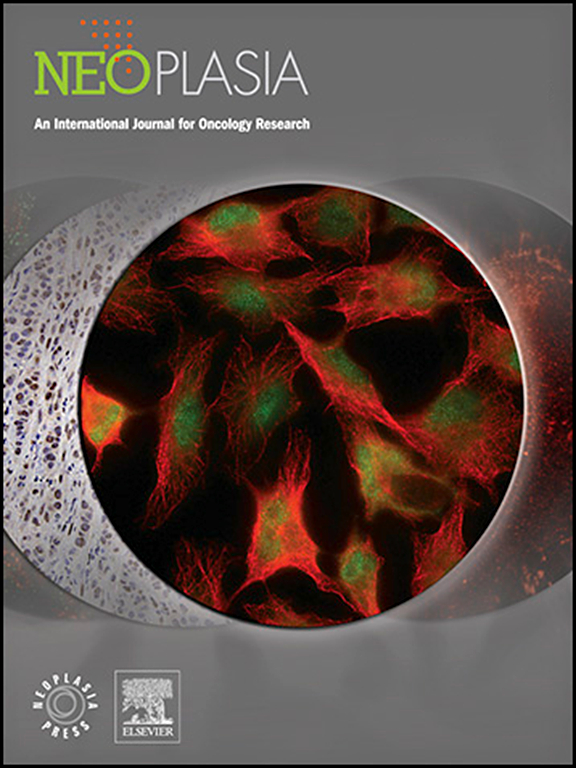Systemic brain dissemination of glioblastoma requires transdifferentiation into endothelial-like cells via TGF-β-ALK1-Smad1/5 signaling
IF 4.8
2区 医学
Q1 Biochemistry, Genetics and Molecular Biology
引用次数: 0
Abstract
Glioblastoma is the most aggressive type of brain cancer, but treatment improvements for glioblastoma patients remain stagnated for over 20 years. This is despite the large number of clinical trials that have attempted to replicate the success of therapeutics developed for other cancer types. This discrepancy highlights the urgent need to decipher the unique biology of glioblastomas. Here, we show that glioblastoma tumour cells are highly plastic, integrating into blood vessel walls to disseminate throughout the brain. This relies on the transdifferentiation of glioblastoma tumor cells into endothelial-like cells in a process we termed endothelialisation. Mechanistically, in addition to TGF-β-ALK5-Smad2/3 signaling, glioblastoma tumour cells also activate TGF-β-ALK1-Smad1/5 signaling – a mechanism previously thought to be limited to endothelial cells. Consequently, therapeutic targeting of TGF-β-ALK1-Smad1/5 activity impaired endothelialisation-driven glioblastoma progression. This study identifies a previously unknown component of glioblastoma biology and establishes a therapeutic approach to reduce the progression of this disease.
胶质母细胞瘤的系统性脑播散需要通过TGF-β-ALK1-Smad1/5信号转导分化为内皮样细胞。
胶质母细胞瘤是最具侵袭性的脑癌类型,但对胶质母细胞瘤患者的治疗进展停滞了20多年。尽管有大量的临床试验试图复制针对其他癌症类型的治疗方法的成功。这种差异突出了迫切需要破译胶质母细胞瘤的独特生物学。在这里,我们显示胶质母细胞瘤肿瘤细胞具有高度的可塑性,可以整合到血管壁并扩散到整个大脑。这依赖于胶质母细胞瘤肿瘤细胞向内皮样细胞的转分化过程,我们称之为内皮化。在机制上,除了TGF-β- alk5 - smad2 /3信号外,胶质母细胞瘤肿瘤细胞也激活TGF-β- alk1 - smad1 /5信号,这一机制以前被认为仅限于内皮细胞。因此,靶向TGF-β-ALK1-Smad1/5活性的治疗可损害内皮化驱动的胶质母细胞瘤进展。本研究确定了胶质母细胞瘤生物学中一个以前未知的成分,并建立了一种治疗方法来减少这种疾病的进展。
本文章由计算机程序翻译,如有差异,请以英文原文为准。
求助全文
约1分钟内获得全文
求助全文
来源期刊

Neoplasia
医学-肿瘤学
CiteScore
9.20
自引率
2.10%
发文量
82
审稿时长
26 days
期刊介绍:
Neoplasia publishes the results of novel investigations in all areas of oncology research. The title Neoplasia was chosen to convey the journal’s breadth, which encompasses the traditional disciplines of cancer research as well as emerging fields and interdisciplinary investigations. Neoplasia is interested in studies describing new molecular and genetic findings relating to the neoplastic phenotype and in laboratory and clinical studies demonstrating creative applications of advances in the basic sciences to risk assessment, prognostic indications, detection, diagnosis, and treatment. In addition to regular Research Reports, Neoplasia also publishes Reviews and Meeting Reports. Neoplasia is committed to ensuring a thorough, fair, and rapid review and publication schedule to further its mission of serving both the scientific and clinical communities by disseminating important data and ideas in cancer research.
 求助内容:
求助内容: 应助结果提醒方式:
应助结果提醒方式:


